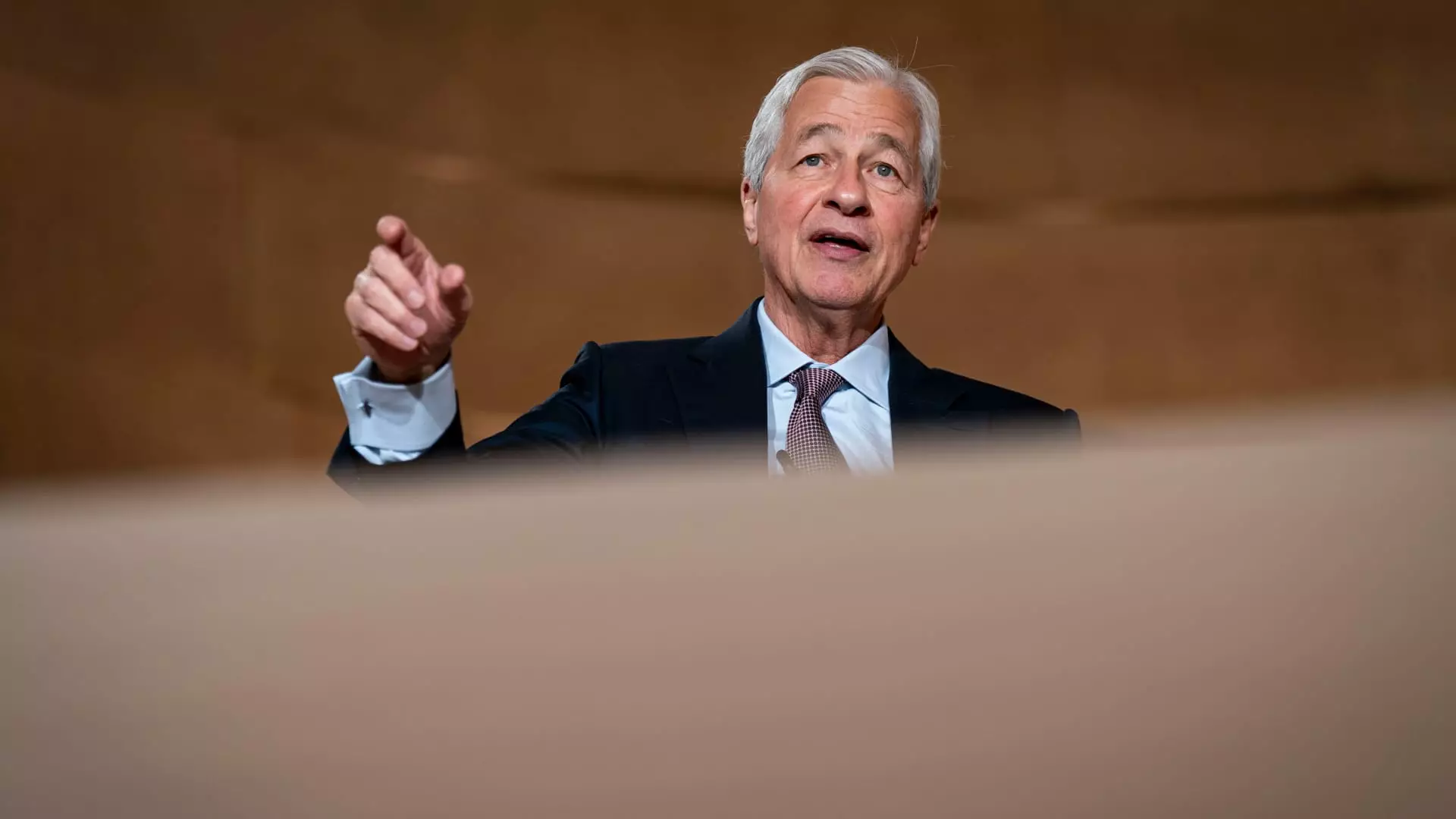In a world where economic indicators fluctuate with alarming rapidity, Jamie Dimon, the CEO of JPMorgan Chase, has engaged in an essential discourse that merits wider attention. During a recent investor meeting in New York, he voiced concerns that resonate with many of us who are navigating the uncertainties of modern economics. Dimon opines that a severe underestimation of risks associated with U.S. fiscal deficits, trade tariffs, and geopolitical tensions is pervasive among market participants and central banks alike. For anyone holding substantial investments, this call to awareness should compel a deeper examination of our financial situation.
Dimon’s assertion that we are witnessing an all-too-comfortable complacency in the market brings forth alarming questions: Are we truly prepared for potentially rising inflation? Are we ignoring signs of an impending stagflation scenario? His statements essentially challenge us to confront a growing denial pervasive in the financial realm, where justification of rising stock prices seems dangerously optimistic in the face of mounting economic pressures.
The Pervasive Illusion of Stability
Consider Dimon’s take on the market rebound from its depths, a bounce back that observers might interpret as a symbol of resilience. Yet, he characterizes this phenomenon as “extraordinary complacency.” The stock market’s resurgence might reflect an illusion of stability, but beneath this surface, deeper fissures are forming. This rhetoric hinges on a broader critique of an economic culture that often prioritizes short-term gains over long-term stability. Dimon characterizes the financial landscape as a “wait-and-see” environment, particularly among corporate clients hesitant to make major investments or acquisitions. This behavior, steeped in uncertainty and cautious ambition, signals a systemic dysfunction that should concern any serious economic player.
The implications of Dimon’s analysis extend beyond mere speculation; they underline a critical need for recalibrating our economic expectations. Flat earnings growth—projected to shrink from 12% to zero—renders the traditional price-to-earnings ratios increasingly misleading. This prompts a crucial reflection: Are we prepared for the reality of a faltering economy that could strip away the façade of buoyant stock valuations?
Redefining the Economic Dialogue
When Dimon mentions the complacency of central banks, it strikes at a core belief system within modern economics. Central banking policies have often positioned themselves as the bedrock of financial stability. Yet, in the face of increasingly complex economic dilemmas, is this reliance justified? Dimon’s skepticism prompts a broader conversation—a re-examination of central bank efficacy that resonates with a growing faction of economists advocating for more nuanced monetary policies.
In grappling with these themes, we must address the undercurrents of risk, considering the ramifications that arise from fixing a myopic gaze on market upward trends. The perception that the market can weather the oncoming storm without substantial consequences carries a sense of autocracy that many investors should not tolerate. Therefore, it is imperative that we transition discourse from mere data analysis to critical evaluations of the socio-political ramifications influencing our economies.
The Path Ahead: A Cautious Optimism
What Dimon articulates transcends rhetoric; it functions as a cautionary tale tethered to genuine economic principles. His perspective aligns with the center-wing liberalism that emphasizes reasoned caution and responsibility, urging us to navigate the upcoming headwinds with vigilance rather than blind optimism. The reality of rising tariffs and national deficits is not merely a backdrop; it’s a pivotal catalyst that could reshape our economic landscape in unprecedented ways.
While acknowledging these risks, Dimon’s candid assessment instills a sense of accountability among all economic stakeholders. Recognizing the potential of stagflation—an economic nightmare—could serve as a foundation for rebuilding trust in market systems. It is not about stifling growth but rather recalibrating our expectations, fostering a culture that embraces careful prudence.
In the overarching narrative of economic resilience, Dimon’s insights should be viewed as a rallying cry for diversification, innovation, and a deeply rooted acknowledgment of the complexities that define our financial systems. This is a moment demanding introspection, a time to recalibrate expectations, and perhaps to cultivate a new appreciation for the intricacies of economic life in an age marked by uncertainty and unprecedented challenges.


Leave a Reply